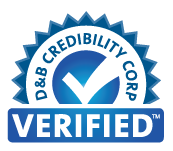You are here
RTO Brought Back from the Brink of Failure: Teaching Old Valves some New Tricks
What do 96.1%, 95.7%, 91.15% have in common? They are the average DRE (Destruction Rate Efficiency) of a Durr two-tower RTO over the past three EPA compliance tests dating back to 2010. When RHZ Environmental reviewed the data and inspected valves we knew the unit was in serious trouble. The valves were warped. Proper seating was impossible. RHZ staff discussed the issues and offered the client two options:
The Traditional Approach: Replace the warped valves. This is a tried and true approach. It would correct the problem but at a substantial cost.
The Innovative: Let RHZ Environmental create a customized solution that will improve their current valves' performance at a fraction of the costs.
The client weighed their options and put their trust into RHZ's hands. They hoped we could provide a cost-effective solution to their all-too-common problem.
The results speak for themselves. The RTO that could barely pass the required 95% DRE with moderate solvent loading two years ago now exceeded 98.3%. Our modifications worked beautifully.
With these promising results in hand, we decided to press our luck to try and save the client even more money. The valve mods had proven themselves, so we knew we had nothing left to prove, but a lot of money to save.
The RTO was tested again and exceeded our humble expectations. With the latest modifications the Durr two-tower RTO comfortably exceeded 96.73%. The new valve modifications worked extremely well, while the other system modifications will save the client tens of thousands of dollars every year in reduced utility consumption.
It was the best possible outcome for all parties.
RHZ Environmental proved that it is possible to teach old valves some new tricks.
- Log in to post comments


